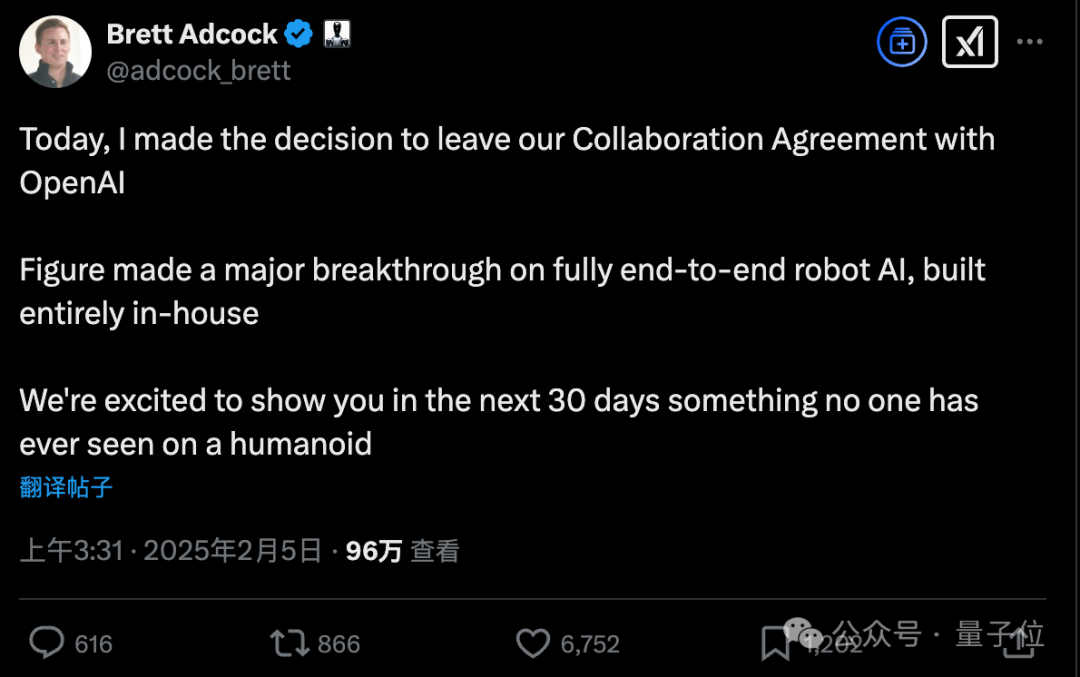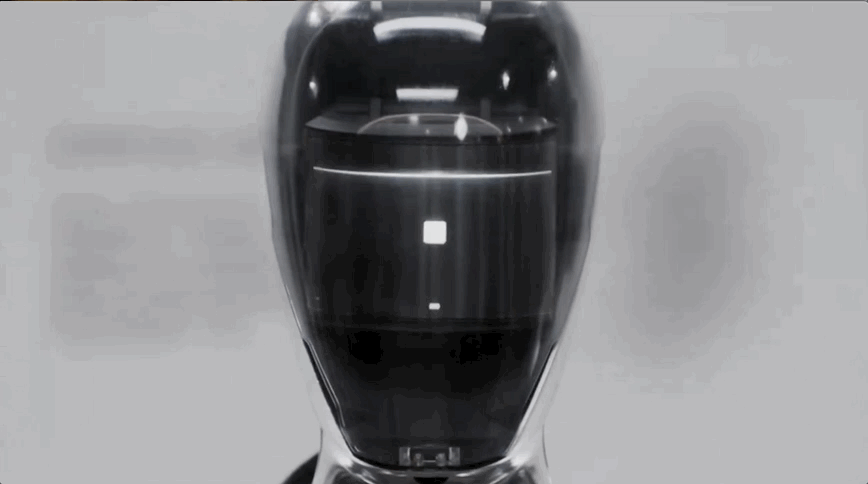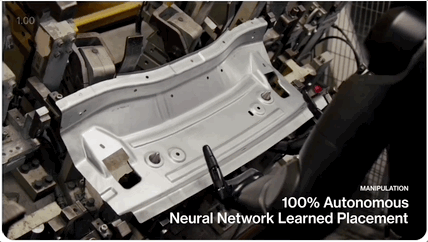Quantum Bit | WeChat Official Account QbitAI
It is quite unexpected that the humanoid robot unicorn Figure has announced the termination of its partnership with OpenAI.
The founder Brett Adcock stated that significant breakthroughs have been made in their end-to-end robot AI, and they will showcase “something that has never been seen in humanoid robots” in the next 30 days.

Due to the timing of the announcement, netizens in the comments section speculated: Could it be that they are switching to the open-source DeepSeek model?

According to Techcrunch, the issue lies in integrating the AI model into the robot hardware.
Rather than using OpenAI’s model, Figure is now more inclined to vertically integrate robot AI, establishing an end-to-end AI model specifically tailored for certain robot hardware.

△Figure’s early promotional video
Just a few days ago, founder Adcock revealed that the company has signed with a second major client, one of the largest enterprises in the United States.
The project plans to deliver 100,000 humanoid robots over the next four years, and has successfully begun running end-to-end neural networks on the new client’s use cases.

Who is Figure?
Figure was founded in May 2022, and its founder, Bret Adcock, is a serial entrepreneur who also founded the electric aircraft public company Archer Aviation.

After its establishment, Figure quickly secured substantial investments from major players including OpenAI, Microsoft, and NVIDIA, raising a total of $675 million, with a company valuation reaching $2.6 billion.
In 2023, Figure signed a partnership agreement with OpenAI to develop the next generation of AI models aimed at enhancing humanoid robots’ capabilities in language processing and reasoning.
Figure’s first major client is BMW, and the collaboration involves deploying robots in automotive manufacturing plants to perform high-precision and repetitive tasks.

What Other Robot Initiatives Does OpenAI Have?
In addition to Figure, OpenAI’s investment portfolio includes several humanoid robot companies.
1X Technologies, which develops bipedal humanoid robots and wheeled robots, has already been commercialized in parts of the United States and Europe, primarily for industrial and home applications.
Physical Intelligence is focused on developing general-purpose robot software “π0” to empower various robotic devices to perform complex tasks.
At the end of last year, OpenAI’s plans for self-developed robot hardware were just revealed, having recruited Caitlin Kalinowski, head of Meta’s robotics and consumer hardware teams.
In the new year, OpenAI has been actively recruiting robot hardware engineers, with salaries reaching up to $3.22 million.
Additionally, domestic companies such as Yushu Technology, Yundong Technology, and Zhongqing Robotics have also been very active during this period.
All signs indicate that by 2025, humanoid robot hardware and AI will be a significant focus in the tech industry.